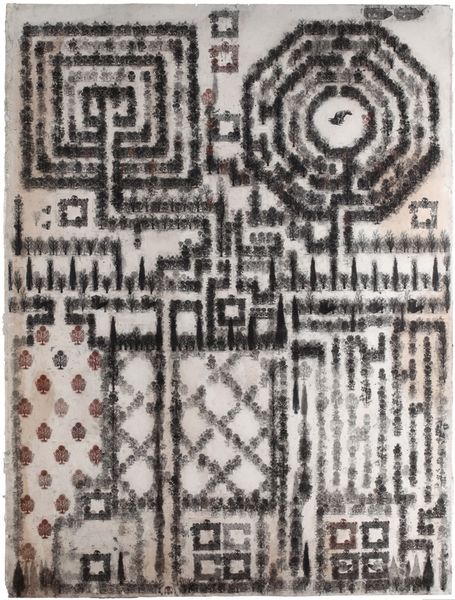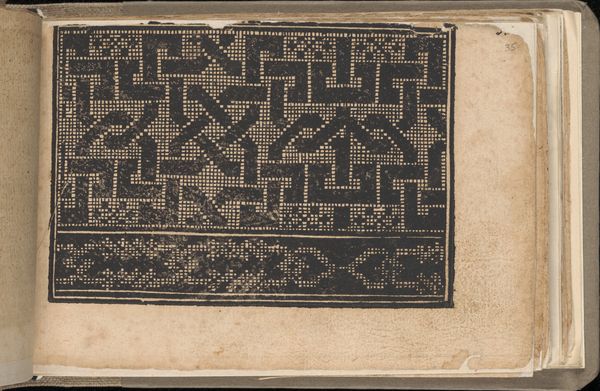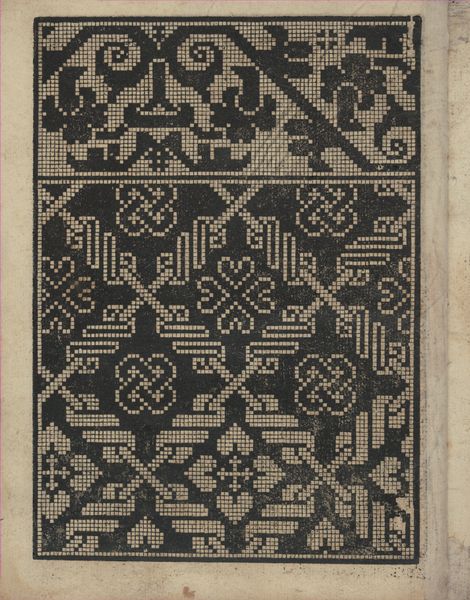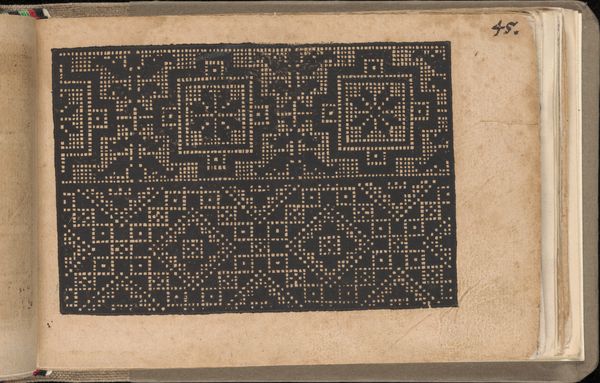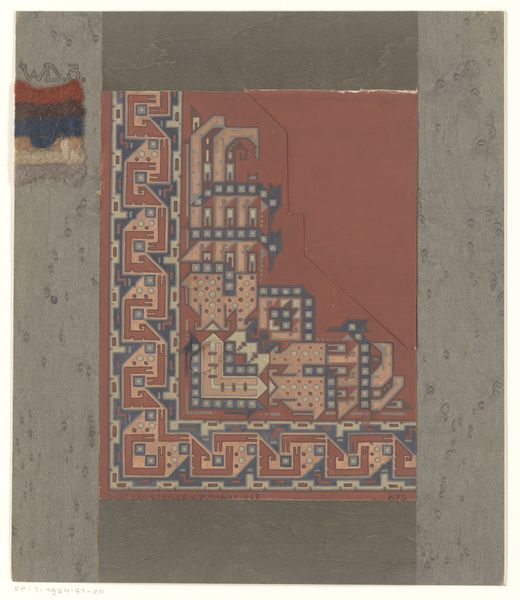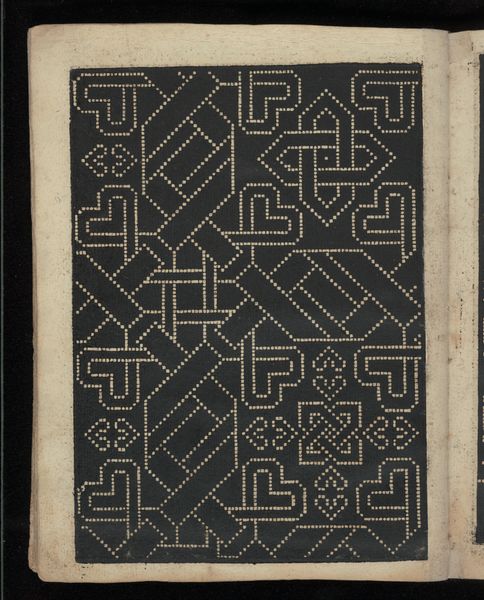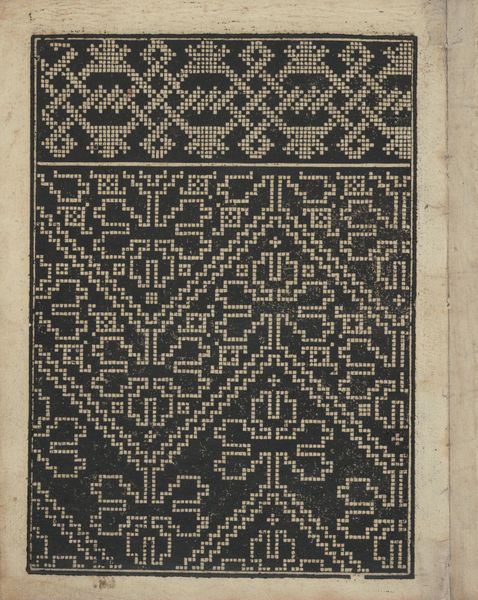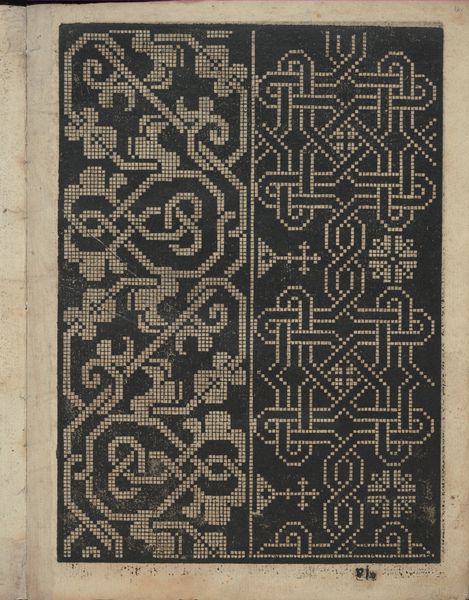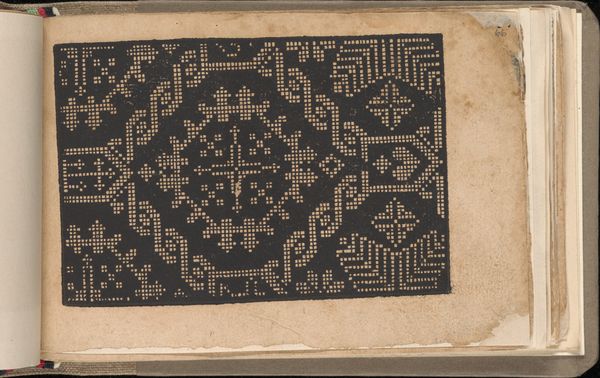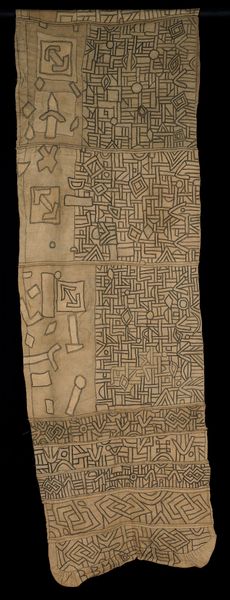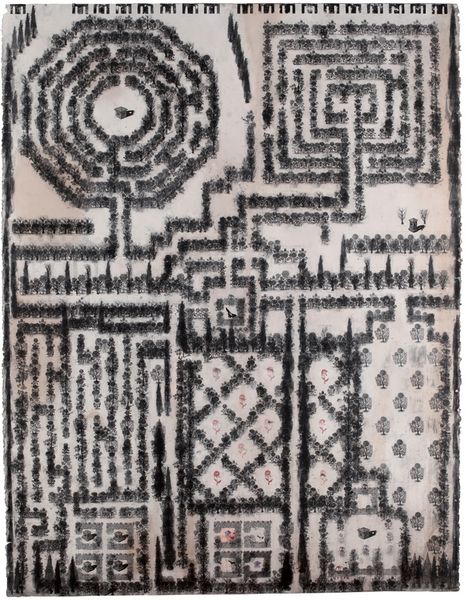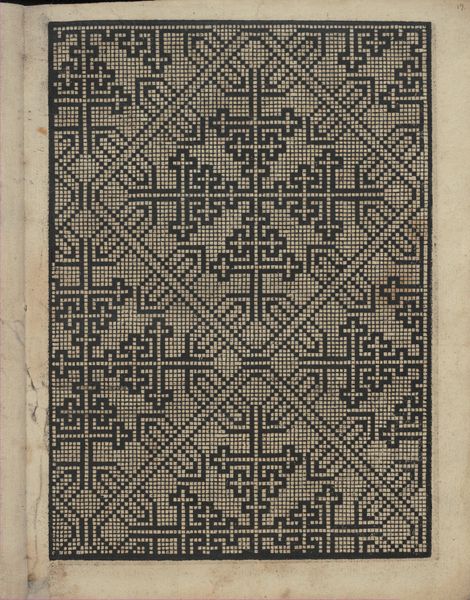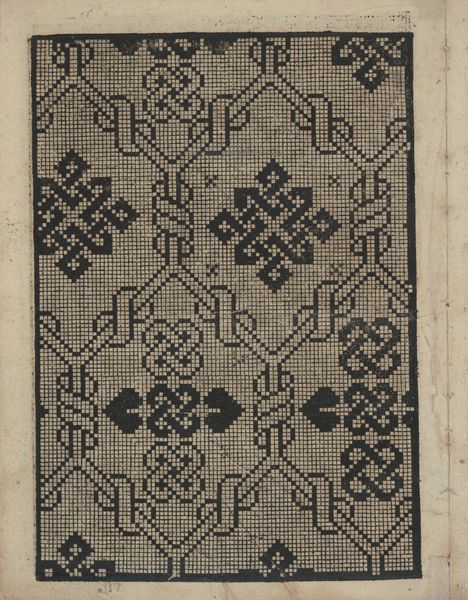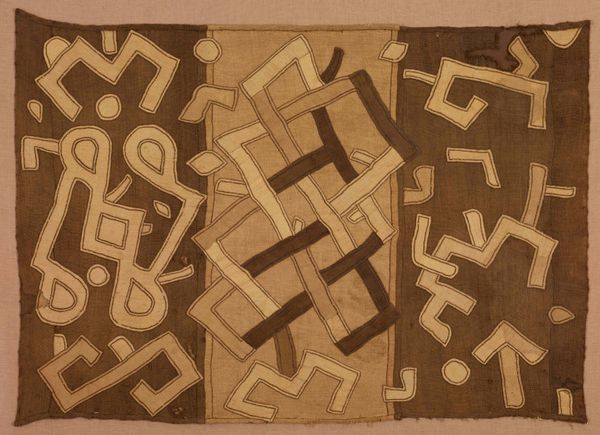
fibre-art, weaving, textile
#
fibre-art
#
weaving
#
textile
#
geometric
#
indigenous-americas
Dimensions: 52.1 × 27.6 cm (20 1/2 × 10 7/8 in.)
Copyright: Public Domain
This textile fragment was created by the Moche people of ancient Peru. It's made from woven fibers, likely cotton and alpaca wool, dyed in a range of earth tones and vibrant blues. The Moche civilization flourished between the 1st and 8th centuries, a period marked by complex social hierarchies and elaborate religious beliefs. Textiles like this weren't just decorative; they served as important markers of status and power. The geometric patterns and zoomorphic figures, such as the stylized creature with outstretched limbs, held symbolic meaning, possibly related to mythology or social order. Archaeologists and art historians study such fragments to reconstruct Moche society, analyzing the materials, techniques, and iconography to understand their worldview and the role of art in their lives. The survival of this fragment offers a glimpse into a sophisticated culture, inviting us to consider how art reflects and shapes the society that produces it.
Comments
No comments
Be the first to comment and join the conversation on the ultimate creative platform.
